Ophelia: Ireland recovers from worst storm on record that killed three

Three people are dead and hundreds of thousands still without power following the worst storm in recorded history on the island of Ireland.
The storm force winds cleared Ireland's coast by midnight, but people were warned to remain cautious in the aftermath of the extreme weather.
Fallen trees blocking roads and downed power lines are some of the likely hazards on Tuesday as the country begins to return to normal following a day when the island of Ireland went into lockdown.
Violent winds of more than 96mph (156kph) in places caused widespread damage to electricity networks, uprooting trees and damaging properties.
Two men and a woman were killed in separate incidents in the Republic of Ireland.
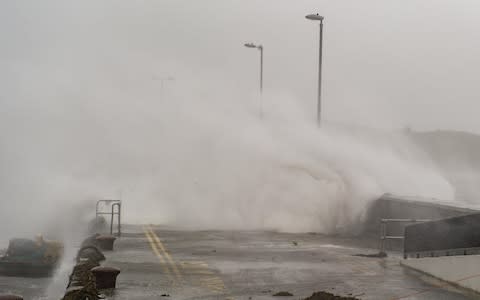
One man was killed in Ravensdale, Dundalk, when a car he was in was struck by a tree at around 2.45pm, gardai said.
In Cahir, Co Tipperary, a man in his 30s was killed in a chainsaw accident when he was trying to clear a tree downed by the wind.
Earlier, a woman died when a tree fell on her car in severe wind.
The Garda said the driver was in her mid 50s and was travelling outside Aglish village in Co Waterford.
A female passenger, in her 70s, was injured and taken to Waterford Regional Hospital for treatment, gardai said. Her injuries are not believed to be life-threatening.
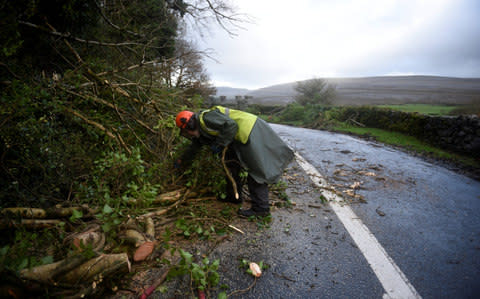
Off the coast of Rosslare, a volunteer lifeboat crew rescued three men on a yacht after they got into trouble in the storm.
The men had been trying to get to safety in a harbour but were constantly pushed back by wind and tides.
They issued a mayday 10 miles offshore and were rescued by the Rosslare Harbour lifeboat.
The storm has caused major disruption to power supplies and 330,000 homes and businesses were still without power on Monday night.
Help from Northern Ireland and the rest of the UK is expected to be drafted in on Wednesday to help restore power, ESB, the Republic of Ireland's electricity network, said.
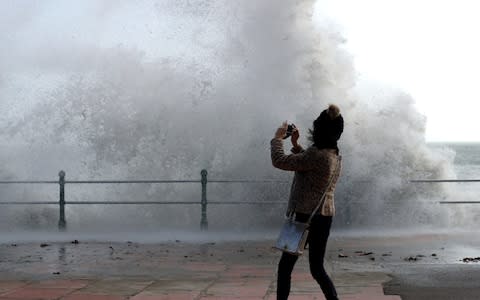
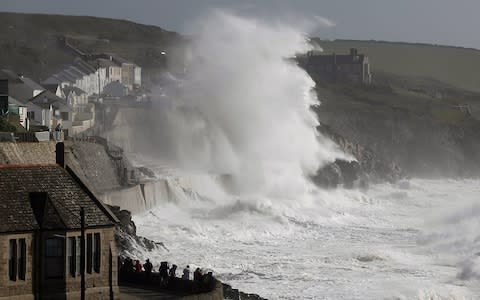
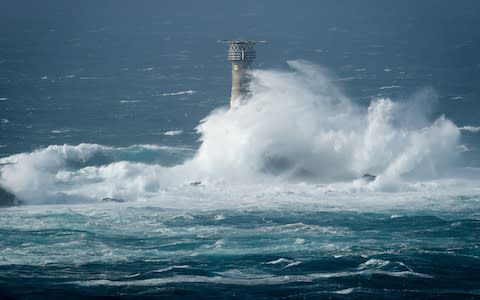
Officials have warned that repairs will take several days. Some areas were also hit by shortages to water supplies.
There were reports of localised flooding in Co Galway, and storm surges and severe winds were still predicted to pose a threat on the Dublin and Louth coasts until late on Monday night.
A spokesman for the HSE said there had been a significant impact on health services, and warned of disruption in the "coming days" with some cancellations and delays expected to appointments and discharges from hospital.
Taoiseach Leo Varadkar has said additional funding will be made available to assist in the clean-up, and work is under way to assess the damage.
"As is always the case in national emergencies like this, full resources and additional funding will be available," he said.
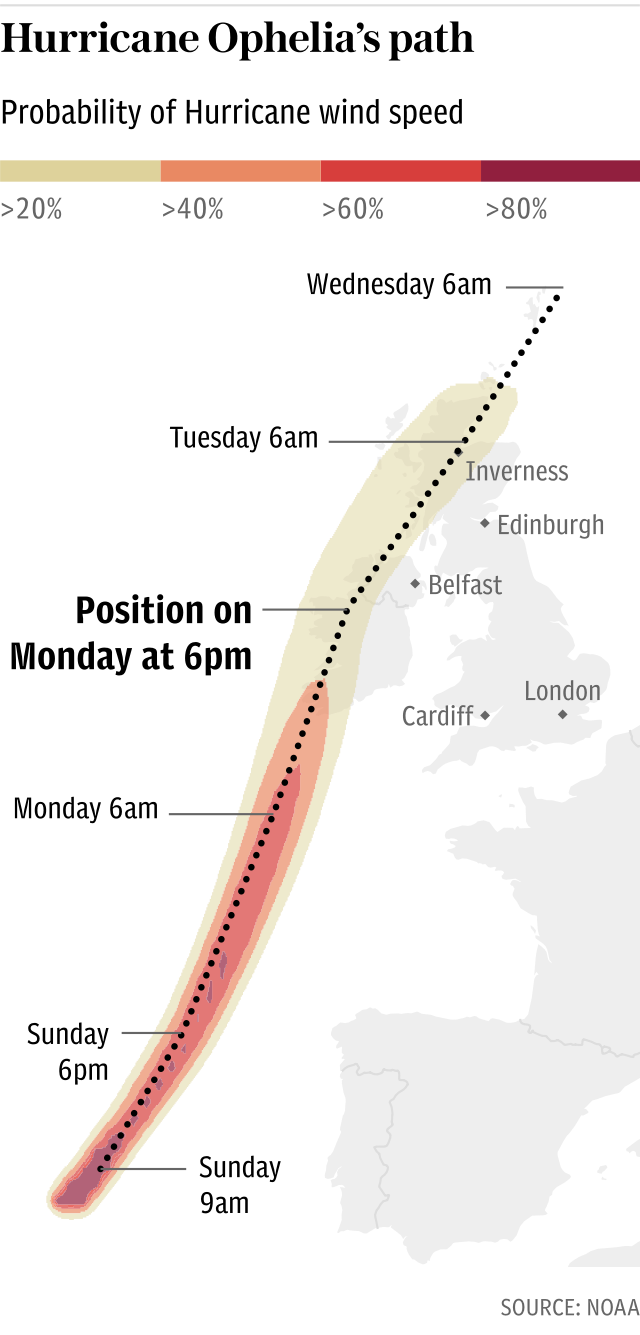
More than 18,000 homes and businesses were without electricity in Northern Ireland at 5pm on Monday.
Earlier in the day the storm forced former US president Bill Clinton to postpone a planned intervention in Northern Ireland's political stalemate.
The Press Association understands Mr Clinton had been due to meet the region's warring political parties as they struggle to reach a deal to restore the collapsed Executive.
But the visit was called off at late notice due to the severe weather. It is understood the visit may still take place on Tuesday.
With the full extent of the storm damage still unknown, authorities in the Republic and Northern Ireland have said schools should remain closed for a second day to ensure the safety of children and staff.
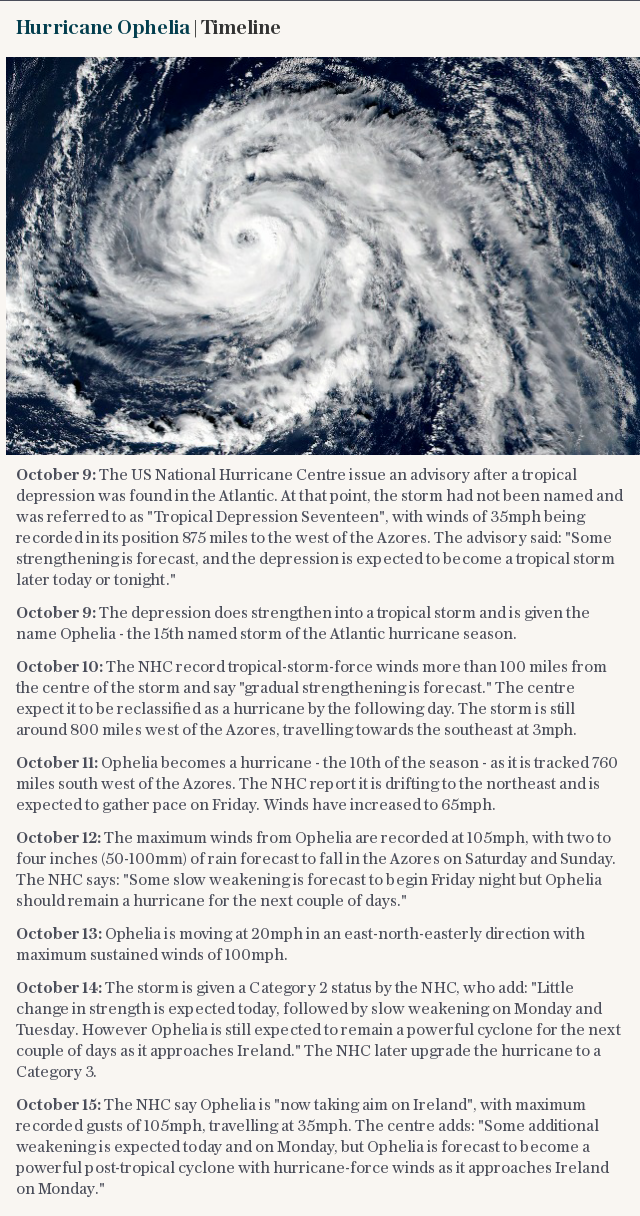
Met Eireann described the storm as the most powerful to have been this far east in the Atlantic.
Three decades on from Great Storm of 1987
The storm is arriving exactly 30 years to the day of one of the most memorable weather events in recent UK history.
On the night of October 15-16 1987, the UK was battered by hurricane-force winds with at least 22 people killed across England and France.
Devastation and recovery at National Trust properties
A series of photographs taken in the aftermath of the Great Storm of 1987 and of the same places today reveal how treasured landscapes have recovered.
The cyclone killed 18 people and caused an estimated £1 billion of damage when it struck the south of England 30 years ago. It also brought down around 15 million trees.
Photographs taken from a helicopter in the aftermath of the night of October 15/16 1987 revealed the devastation wrought in gardens and woodlands at National Trust properties.

The shoot was coordinated by Mike Calnan, now the conservation charity's head of gardens.
He said: "Seeing the gardens and woodlands from above offered a whole new perspective on the damage caused.
"As we hovered over Emmetts Garden everyone in the helicopter fell silent - it was like a war zone."

The National Trust has replicated the series of photographs three decades on at some of the most severely hit places - Emmetts, Chartwell and Knole, in Kent.
Pictures have been taken from the same vantage points, this time using drones, and show how nature has bounced back from the catastrophe.

Mr Calnan said: "It was quite moving to put the photographs next to each other and compare how different they are.
"After being shattered by the storm, our gardens and woodlands now look similar to how they did before, which is down to a combination of careful planning, hard work and time.
"We learnt a lot from the storm, which has shaped how we look after the places in our care today. Interestingly, areas that were left to regenerate naturally in some cases developed faster than those that we carefully replanted."
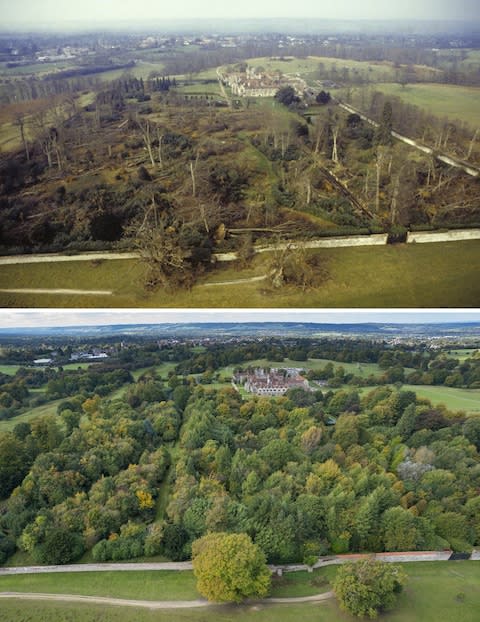
Some 58 National Trust properties across 13 counties, from Blickling Hall in Norfolk to Slindon in West Sussex, were affected by the Great Storm, with more than 350,000 trees lost on the organisation's land.
In the years after the storm the Trust planted 500,000 trees, in some cases selecting species better suited to extreme weather, and designed "shelterbelts" to ensure greater resilience to storms.

 Yahoo News
Yahoo News 
